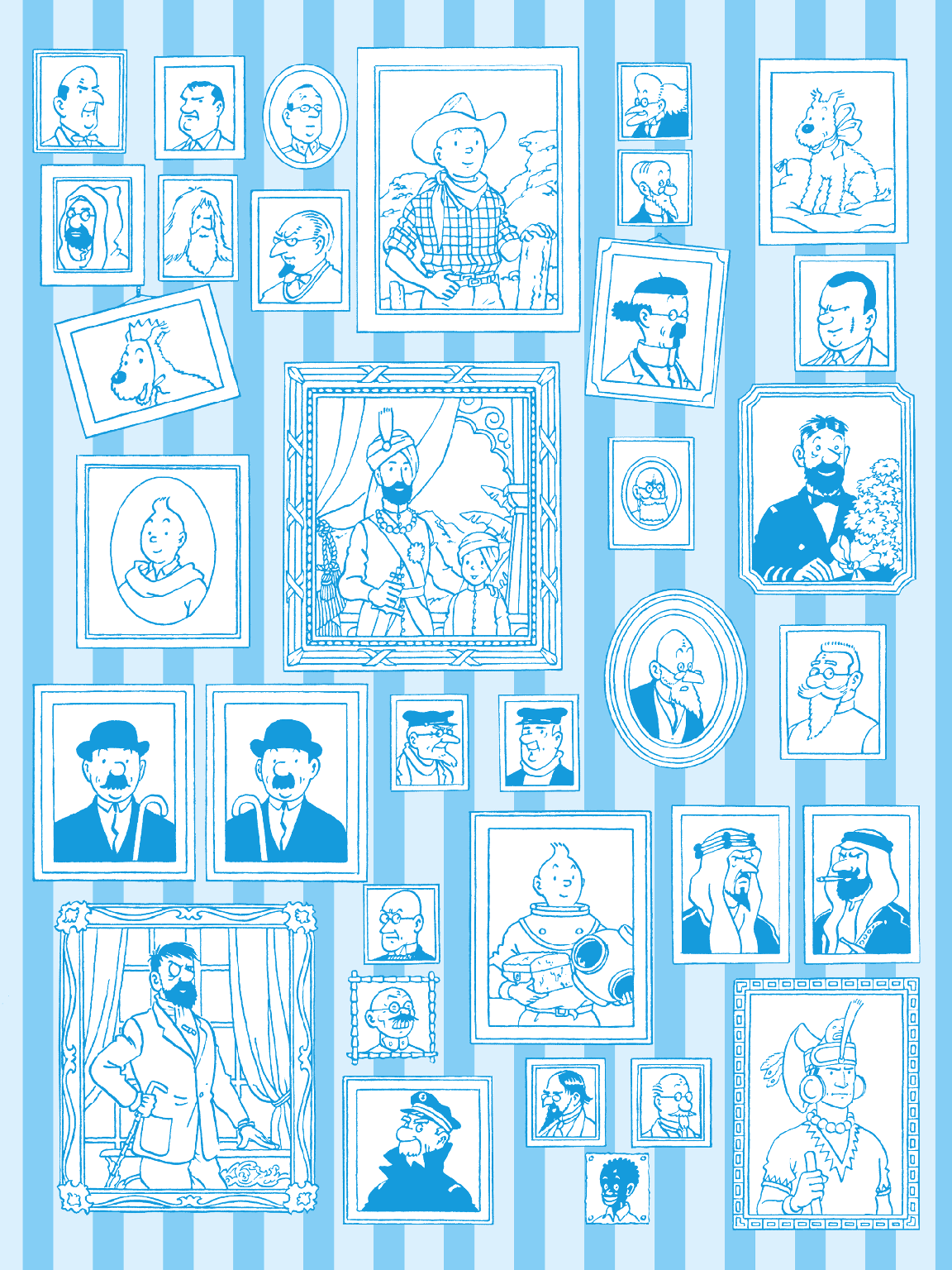The Crab with the Golden Claws
This story was first published in French in 1941 and returns to the theme of an exotic adventure. Tintin sets off for North Africa. He thwarts a scheme thought-up by a gang of criminals who have hidden opium in tins of crab-meat. Thanks to this adventure, Tintin meets Haddock who will become his side-kick in the future.
Test your knowledge
+

To adapt the albums to the new format of 62 pages, Hergé usually puts back two pages of six frames on a page of twelve frames. For some titles, the conversion is simple: 124 black and white pages become 62 colour pages. For others, it is necessary to delete certain passages to bring the story into this new mould. The Crab with the Golden Claws is the shortest story with only 100 pages. We'll have to be clever. Above all, Hergé keeps the 4 off-text plates (pp.21, 29, 40 and 49). Then he makes many link drawings that he inserts between two frames, then enlarges some pictures until they spread out over half a page (pp.22 and 35).
A new companion
While chasing after the strange tins of crab-meat, Tintin meets his side-kick of the future: Captain Haddock. Haddock is not at his best, to say the least. He is both Allan's prisoner and totally alcoholic.

Before being cured, we shall have the pleasure of hearing the famous insults: pockmark, gibbering ghost, freshwater swabs and many more, blistering barnacles!
Tit for tat: Snowy takes his revenge!
The adventure starts with a scene similar to that of a silent movie. Snowy is scolded by his master for having explored a dustbin. A few moments later, Tintin does the same. Snowy returns the compliment! Good for you, Snowy!

Authenticity guaranteed: From Glengarry to Karaboudjan
Take a look ! it's the work of a professional. The similarity between the two cargoes is incredible. For Hergé, it is essential to have the right documentation to create each vignette in a large format. The scenery has to be exact but remaining in the Tintin style; “each detail has its importance while at the same time being integrated into the final drawing of the vignette” (Numa Sadoul, Tintin and I, Ed Casterman, p.64).

For more information consult the dossier "Ports et docks".
A touching moment: Mrs. Haddock
The Captain, who first appears in The Crab with the Golden Claws, finds himself in tatters: "a slave to his addiction!" (Numa Sadoul, Tintin and I, Ed Casterman, p.156). He finally bursts into tears whilst thinking of his mother! This total lack of control does not often happen in the Tintin adventures. As we do not meet "Mummy", we can only imagine what she has been through. With a son like the Captain, she must have suffered.

The land of thirst: Something to drink please! I am dying.
After the plane crash, Tintin and Haddock cross the desert in search of water. Due to exhaustion and alcohol, Haddock starts to hallucinate. Fortunately, Snowy is there to protect Tintin.

Old Burgundy: Watch-out for the corkscrew
Overcome by thirst, heat and exhaustion, Tintin and Haddock collapse in the middle of the desert.

Tintin has a nightmare which is provoked by his fear of being mistaken once again for a bottle of champagne. It takes 3 vignettes by Hergé to arrive at a terrifying ending.
Ability to synthesize: A memorable vignette
Terrified when being shouted at insultingly by the Captain Haddock, the Arabs cease to fire and run away from his nasty fit. Hergé was quite happy about this drawing: "in a single frame, a series of movements, broken up and distributed among several characters.

“It could have been the same individual, laying down first, then getting up slowly, hesitating and finally running away. It's like a short cut in space and time.” (Hergé, in Numa Sadoul, Tintin and I, Ed. Casterman, p.156)
In all his work, Hergé likes two drawings. This drawing of the berabers under the fire of the captain's insults is one of them.
















